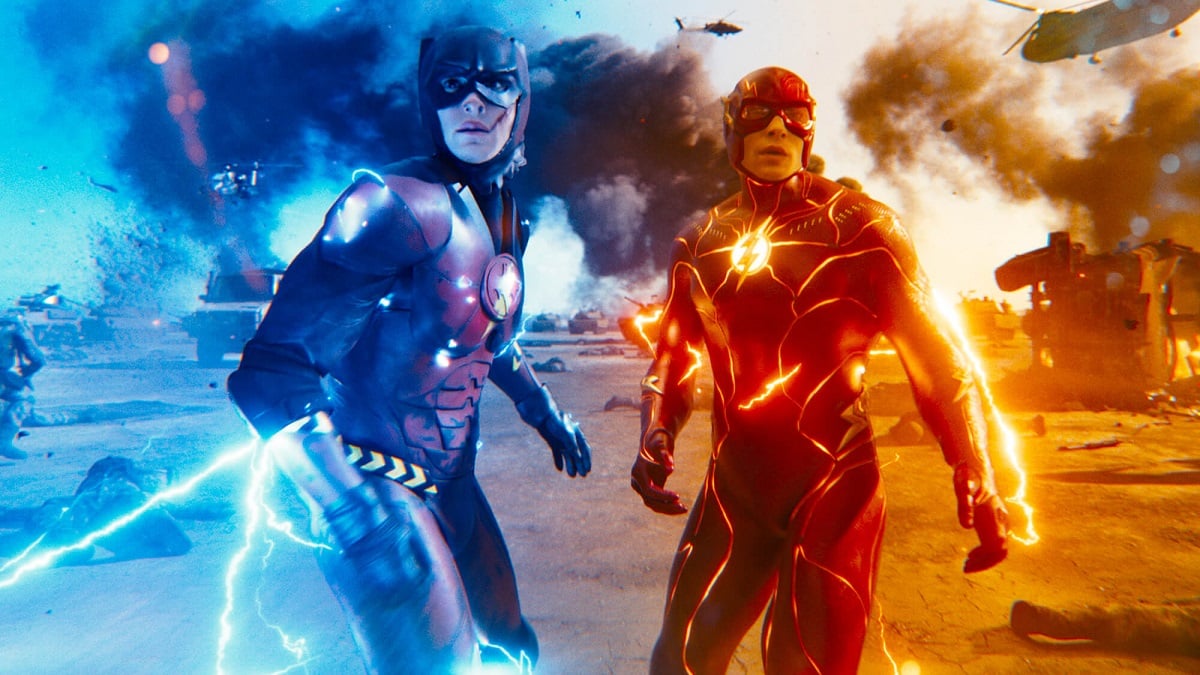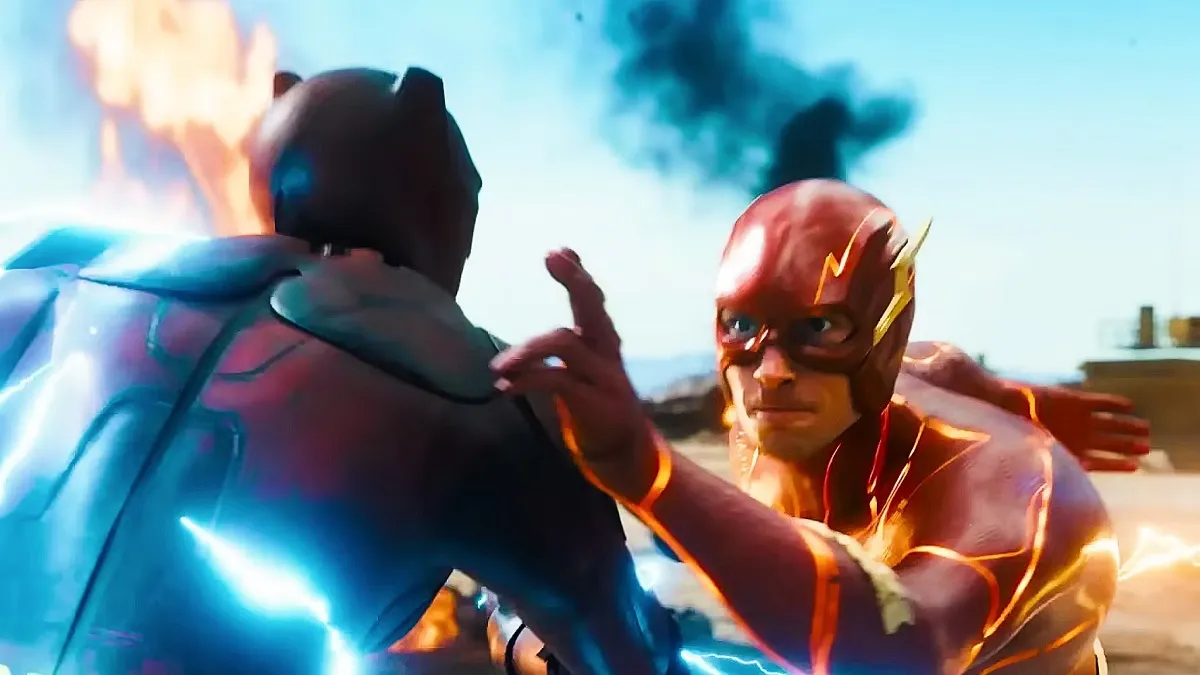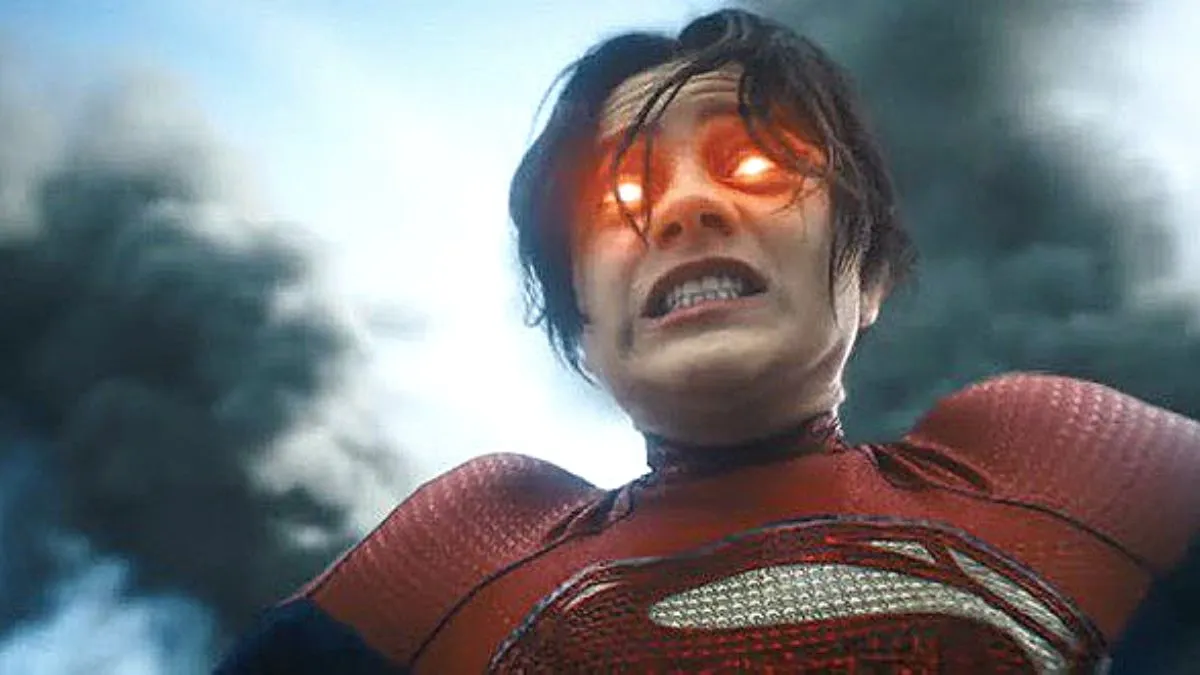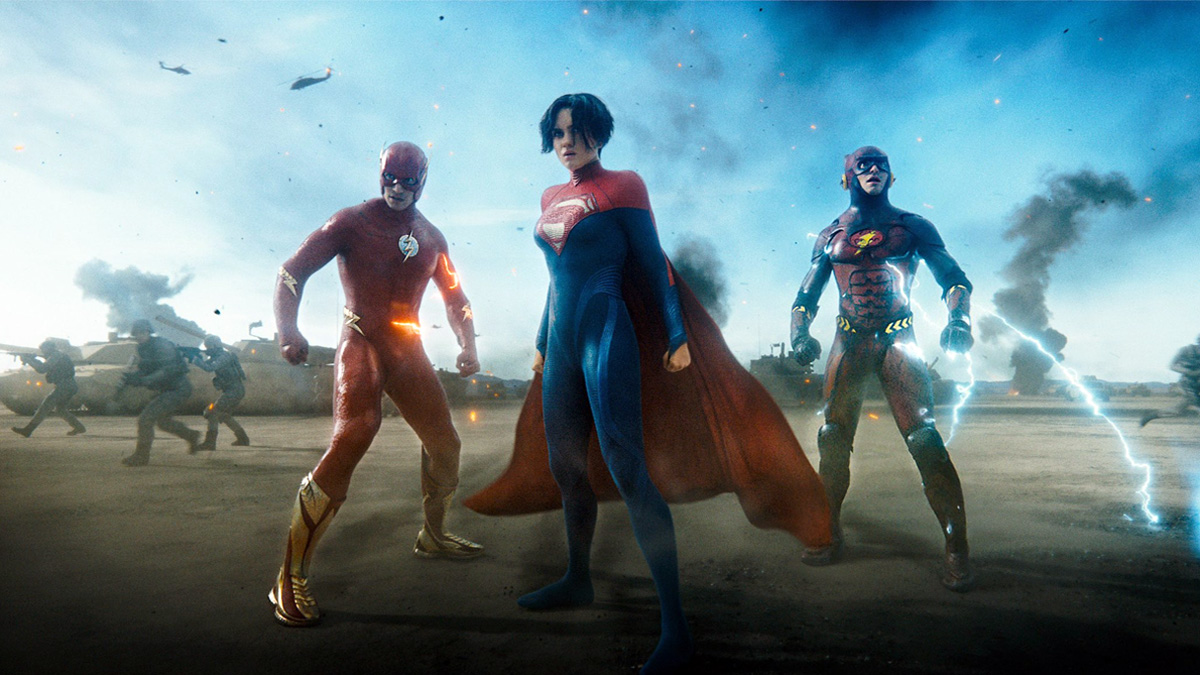The Flash is now in theaters and reactions are rolling in on social media. Current indications are that it’s going to be a divisive movie. Ezra Miller’s motormouth schtick isn’t for everyone, Keaton’s Batman is either a welcome comeback or pointless nostalgia, and the plot is a little too convoluted to hit the emotional beats it aims for.
That said, there’s one notable piece of common ground between the two camps: the VFX are mind-blowingly terrible. We’ve seen the movie and we were outright shocked that a $220m Warner Bros. summer blockbuster would be released in this state. The Flash has some of the very worst CGI characters we’ve seen in years, the compositing is all over the place, the ‘Chronobowl’ sequences are ugly as sin, and the digital double of Miller on screen throughout most of the movie frequently looks just plain weird.
Compounding all this is the large sequences of The Flash revisiting 2013’s Man of Steel, which is now a decade old and is clearly visually superior. Director Andy Muschietti has claimed that some of this is on purpose and that if “it looks a little weird to you that was intended”, but we’re not buying it. What’s even more mystifying is that The Flash‘s VFX supervisor is John “DJ” Despardin, who’s been in charge of many other DCEU movies that looked great.
So, what went so badly wrong with The Flash?
A chaotic production

It’s safe to say The Flash didn’t have an easy time getting to theaters. Warner Bros. has an unfortunate reputation for behind-the-scenes chaos and The Flash has been repeatedly reworked throughout its production. The original shoot took place in 2021 in London, Edinburgh and Glasgow and since then, the trajectory of the DCU has been drastically altered. We won’t get into spoilers here, though it’s clear that the story was altered in post-production and that characters’ fates were changed to pave the road ahead.
All this means that, despite a very long post-production process, key elements must have still been being finalized over the last few months. Some of the worst-looking VFX in the movie involves characters that appear on screen for a very brief cameo and we suspect that negotiations over likeness rights came down to the wire, giving overworked studios an incredibly tight deadline to get them looking as good as they can. Muschietti has also revealed there were multiple cameos planned that didn’t work out, so it’s possible those artists were spread even thinner by working on scenes that may never be released at all.
One other issue may also be that Weta Digital, which worked on Man of Steel, Batman v Superman, and Zack Snyder’s Justice League, is now focused on James Cameron’s Avatar sequels. As shown by The Way of Water these movies are pushing VFX boundaries and have sucked up a lot of the industry’s top talent, leaving Warner Bros. to turn to less experienced studios to get The Flash out the door.
None of that excuses notably poor action sequences, with an obvious example being the Supergirl vs. Russians fight toward the middle of the movie. This looks more like the previz of the fight than the final product and may simply be down to poor planning, unconvincing choreography, and the decision to rely entirely on CGI doubles rather than augmenting live-action elements. The decision to have two Ezra Millers on screen for much of the movie can’t have helped either, further ratcheting up the number of VFX elements needing to be completed to a high standard.
But bubbling away under all this is what’s going on in the wider VFX industry, and it ain’t looking good.
The global VFX crisis

Whatever choices were made during The Flash‘s production, the team would inevitably have run headlong into the ongoing VFX industry issues that have tripped up many recent blockbusters: there is too much work and too few people to do it. A decade ago, high-end VFX would be largely reserved for tentpole blockbusters, though the rise of big-budget streaming shows with a heavy reliance on CGI has seen the industry buckle under the pressure.
Artists have complained of low pay, brutally long hours, no job security, and pointless demands from directors who don’t fully understand how VFX works. The end result has been an industry brain drain, with many experienced artists switching focus away from movies and TV to video games (an industry not without its own problems) or smaller-scale projects in fields like architecture, advertising, and science.
The result is international VFX studios staffed by inexperienced and young artists led by management agreeing to unreasonable timeframes. Large portions of The Flash simply don’t look finished and while we don’t know exactly what went down behind the scenes, we imagine the artists went through hell to get it into even this vaguely complete state.
Will ‘The Flash’ ever be fixed?

It’s not unknown for movies to be ‘patched’. For example, 2019’s Cats was altered during its theatrical run to remove some obvious flaws, with other movies getting a minor VFX tweak in advance of their home release. The problem with The Flash is that Warner Bros. is taking the line that this is how it’s supposed to look, so going back and changing things is essentially admitting that it’s telling fibs.
Sadly, The Flash isn’t going to be the last major movie with notably substandard VFX. The ongoing writers’ strike will only make the situation worse over the next year and there are no indications that working conditions at studios will improve anytime soon, despite ongoing efforts to unionize.
The ever-increasing demand for high-quality VFX isn’t going away and there are no easy answers to the industry’s problems, so it seems likely The Flash was caught in a perfect storm of production issues and unavoidable problems with VFX at large.
None of that will be much comfort to audiences suffering through The Flash‘s hideous visuals over opening weekend and it’ll be interesting to see whether this affects the box office. If negative word-of-mouth results in poor financial performance, Warner Bros. might be incentivized to get it right for its many upcoming DCU projects. If it turns out audiences don’t really care, then get ready for a decade-plus of horrendous-looking blockbuster cinema.











Published: Jun 16, 2023 07:42 am